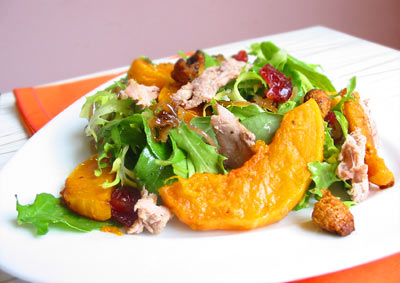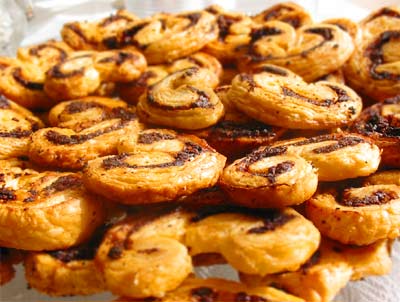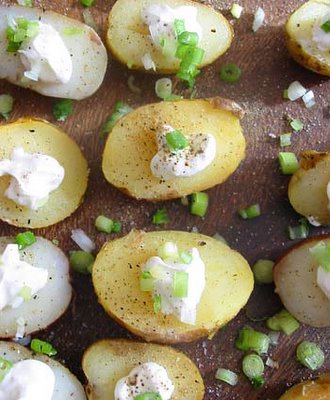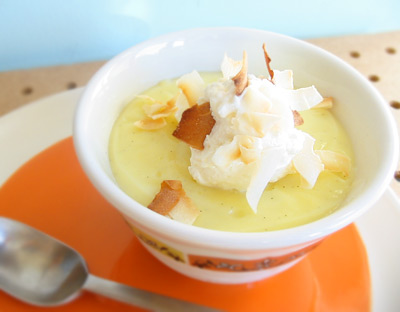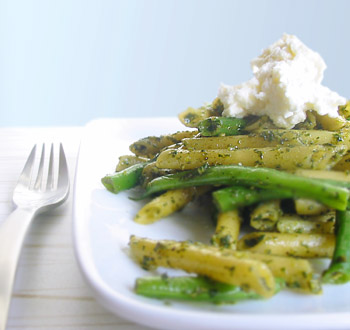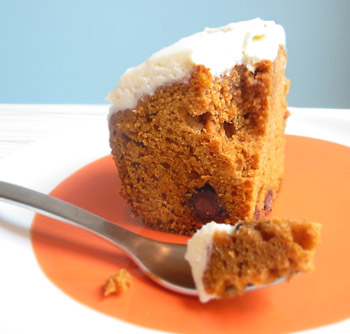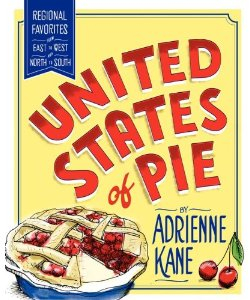 I must say, coming home from England, I did not in fact go for tea even once while I was there. No scones, no clotted cream, not even a crumpet was consumed by me. Chalk it up to jet lag, but come 4 o’clock I was in need of something slightly more potent than a cup of tea. Rather I think that I could have been intravenously hooked up to an enormous coffee urn.
I must say, coming home from England, I did not in fact go for tea even once while I was there. No scones, no clotted cream, not even a crumpet was consumed by me. Chalk it up to jet lag, but come 4 o’clock I was in need of something slightly more potent than a cup of tea. Rather I think that I could have been intravenously hooked up to an enormous coffee urn.
Upon returning home, I realized that this lack of proper tea time treats left me empty. I was in need of a biscuit, or a crumpet, or better still, a scone. But even in the absence of tea time, I did end up with quite a few imported food magazines; so imagine my glee when while perusing through delicious magazine, I spotted a recipe for Potato Scones. The recipe was super simple. I whipped up a batch in no time, and to go with them, a cup of black tea.
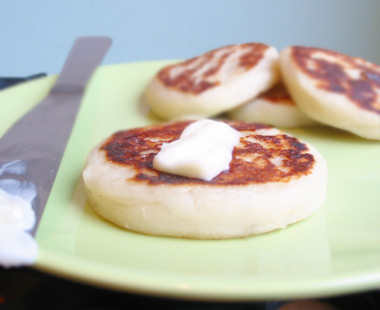
Delightfully easy to make, these scones were mixed up and baked in no time. Half potato pancake, half bread product, these scones were dense, but somehow not heavy. The batter was made by boiling starchy potatoes until cooked, mashing then with an old fashioned potato masher, then adding flour. With no more than a handful of ingredients, they were truly delicious.
Similar to English Muffins, these scones were cooked on the stovetop in a heavy-bottomed, cast-iron skillet. This process gave these savory treats a delightfully crisp, golden brown crust. Maybe these were not the scones of my tea time dreams– they were a bit too savory to warrant a slathering of clotted cream– but they were homey, and comforting. And with a good smear of sweet cream butter, they were scrumptious.
Depending on the weather, moisture of potatoes, humidity of the kitchen, etc. you may need to increase the amount of flour listed. You want the dough to be pliable yet hold together well. As the original recipe uses the metric system, I have also provided rough conversions.
Potato Scones
from delicious magazine
Makes 8-10 scones
450 grams/2 cups (about 4) floury potatoes peeled and cut into quarters
25 grams/2 tablespoons butter
1 teaspoon salt
75 grams/1/3-1/2 cup flour, plus extra for dusting
vegetable oil, for greasing
Boil the potatoes in salted water for 15 minutes, or until tender. Drain well and mash with the butter and salt until smooth. While the potatoes are still hot mix in the flour. This may require a bit more flour than listed. Your dough should be dense yet malleable, and not too sticky. Cool dough, then chill for one hour.
Place chilled dough on a clean surface, dusted with additional flour to prevent sticking, and lightly roll out until 1/2 inch thickness is reached. Take a biscuit cutter, or drinking glass, approximately 4 inches in diameter, and cut out scones. Re-roll the trimmings to obtain more scones.
Lightly grease a heavy-bottomed, or cast-iron skillet, and place on the stove, over medium-low heat. When pan is heated, place the scones in, and cook for 8-10 minutes, flipping once. Depending on the size of your skillet, you may have to cook the scones in batches. Finished scones should be golden-brown outside, moist and dense inside. Enjoy them with a cup of afternoon tea, or have them warmed for breakfast.
 A little bread pudding for breakfast? Why not! I know, I seem to have a fixation with puddings this season. But there is something deeply satisfying about tucking into a warm meal, entirely self-contained, laden with eggs, vanilla, and a bit of dried fruit. (See, dried fruit makes it healthy.)
A little bread pudding for breakfast? Why not! I know, I seem to have a fixation with puddings this season. But there is something deeply satisfying about tucking into a warm meal, entirely self-contained, laden with eggs, vanilla, and a bit of dried fruit. (See, dried fruit makes it healthy.)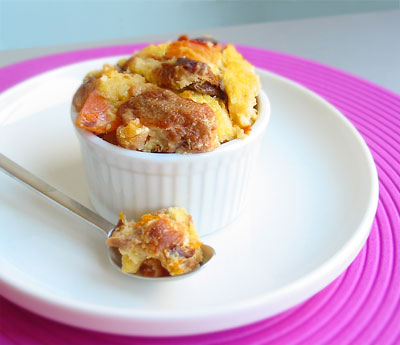 For a Sunday morning Brunch, with neither a savory egg dish nor a batch of fried-up pancakes sounding very appealing, I decided on a bread pudding utilizing a left-over Pandorro from the holidays. The Pandorro was subtly sweet, and sinfully rich, all on its own; so I made a simple, milk-based custard to complete the pudding. The custard was made with a few egg yolks, a few whole eggs, then tempered with a few cups of simmered low-fat milk, and fragranced with tiny flecks of real vanilla bean seeds to bind it together.
For a Sunday morning Brunch, with neither a savory egg dish nor a batch of fried-up pancakes sounding very appealing, I decided on a bread pudding utilizing a left-over Pandorro from the holidays. The Pandorro was subtly sweet, and sinfully rich, all on its own; so I made a simple, milk-based custard to complete the pudding. The custard was made with a few egg yolks, a few whole eggs, then tempered with a few cups of simmered low-fat milk, and fragranced with tiny flecks of real vanilla bean seeds to bind it together.


